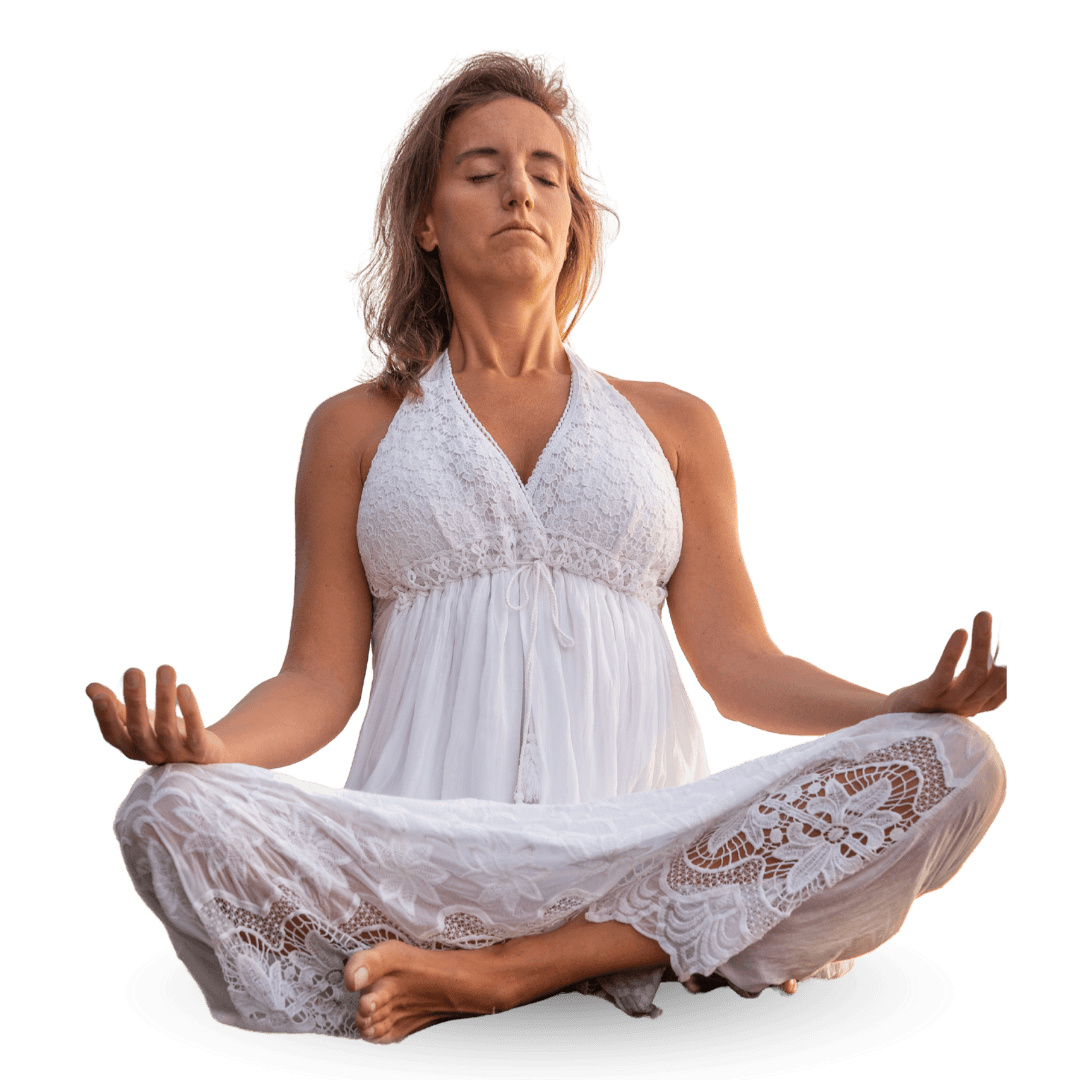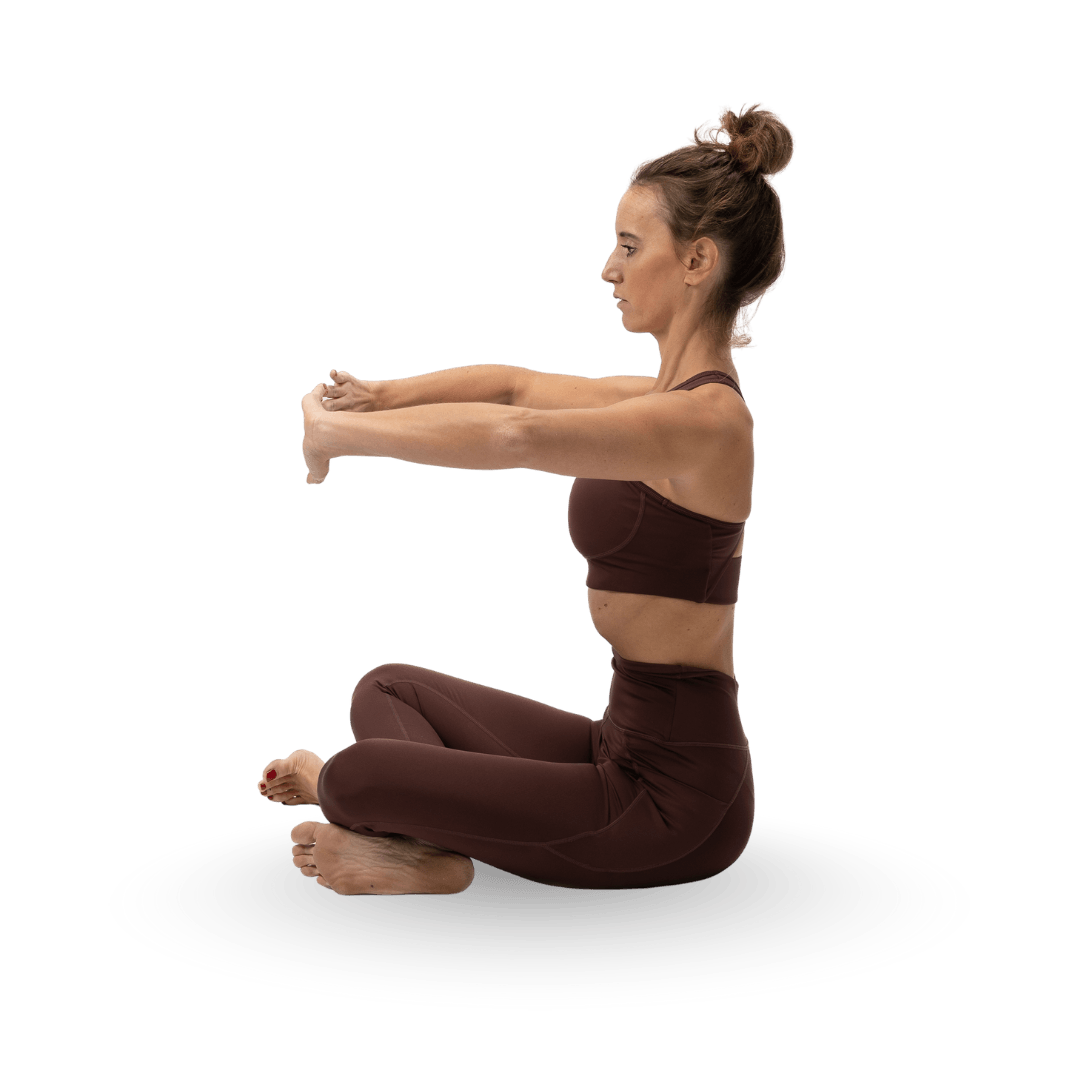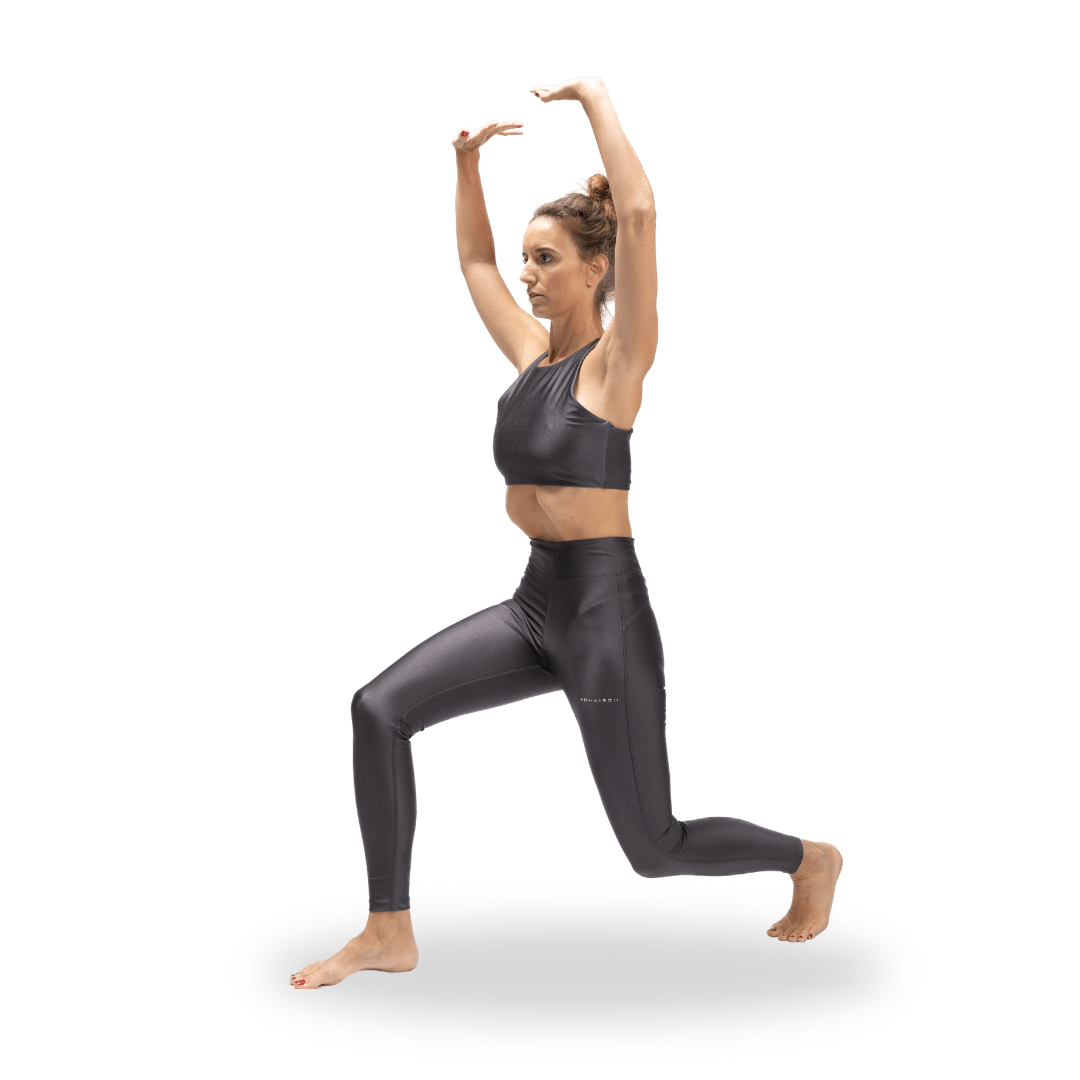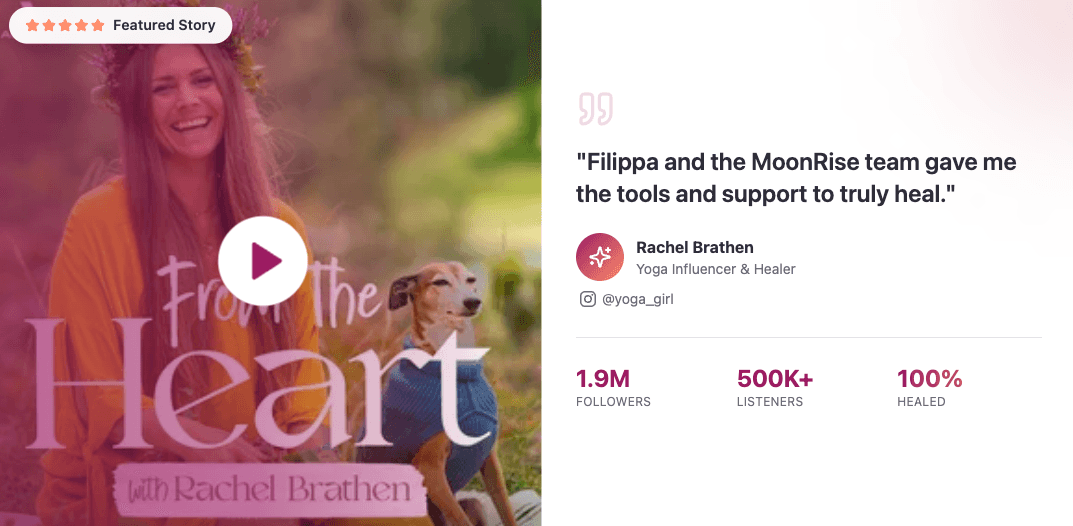Heal Leaks, Pain and Heaviness. For Good. Naturally.
Comprehensive. Holistic. Expert-Led. Suitable For Any Age or Stage.



"Although this is online, everything is very personal, with live classes and the opportunity for regular zoom check-ins"

Andrea Bird
UK, 60

"I had tried numerous ways to help myself to heal the prolapse. I decided to take a leap of faith, I am glad that I did"

Carol Leslie
Canada, 75

200+ Trustpilot reviews 4.9/5
You’ve been told "it's normal." We’re here to tell you it’s common, but it’s not something you have to live with.

You leak when you sneeze, laugh or jump

You feel a heavy dragging or bulging sensation

You live in a constant "bathroom radar"

You experience pain every waking hour

You feel disconnected from your own body

You are tired of Kegels and afraid of surgery



You leak when you sneeze, laugh or jump

You feel a heavy dragging or bulging sensation

You live in a constant "bathroom radar"

You experience pain every waking hour

You miss doing your favourite social activities

You are tired of Kegels and afraid of surgery
Heal Naturally With Our 12 Week Total Pelvic Freedom Program. No Kegels. No Surgery. 100% Holistic.


Personalised Coaching: We pair you with an expert to build a plan specifically for your body

Just 10 mins/day: A tailored video routine that fits into your life - do it anytime, anywhere

No More Guesswork: Live classes and Q&A sessions to ensure you are practicing right

Community Power: Join a global sisterhood that cheers you every step of the way

Results That Last: You get 12 months of post-program support to ensure you never regress

"The entire team is so caring and the support is so personal."
Lisa Goesmann
Australia, 40

"The best mother's day gift I have given myself - thank you!"
Amy Foremann
USA, 52

“I never thought I could reconnect with myself so deeply"
Kerstin
Canada, 55

“I never thought I could regain my pelvic function again."
Thi Dao
USA, 32

You gotta join MoonRise so you don't end up wasting money and time somewhere else."
Philippa
New Zeland, 32

“The symptoms of prolapse has improved a lot within these weeks."
Kim
Canada, 33

"This has completely transformed my life."
Sam Church
UK, 50

“I get to do all this from home at the cost of 1 office visit - brilliant."
Bridgette
USA, 31

“I did certainly have my reservations, but things have turned around for me"
Amanda
UK, 54
The MoonRise Difference: Gentle Whole-Body Therapies Delivered By Alternative Holistic Pelvic Floor Experts

KRISTINA DUNAJ
Hypopressives Instructor and Yoga Teacher

SAM CHURCH
Hypopressives Instructor, Zumba Fitness & Somatic Movements

KRISTINA DUNAJ
Hypopressives Instructor and Yoga Teacher

SAM CHURCH
Hypopressives Instructor, Zumba Fitness & Somatic Movements

Make An Informed Decision With Our Easy 3 Step Process

1. Free Assessment
Gain clarity about our approach & your needs
Takes 5-7 minutes

2. Speak With Us
Join our free workshop
Sample our approach
Book a free consultation

3. Begin Your Healing
Make the investment
Book your 1-1 kick-off call
Begin your program
We Understand You Might Have Some Questions
Pelvic floor dysfunction can show up in many ways, including:
Leaking urine when you cough, sneeze, laugh, or exercise
A heavy, dragging, or bulging sensation in your pelvis or lower abdomen
Pain or discomfort in the pelvic region, lower back, or hips
Difficulty fully emptying your bladder or bowels
Pain or discomfort during intimacy
Core weakness or diastasis recti (ab separation)
Frequent urges to urinate, even when your bladder isn’t full
If you experience any of these, your pelvic floor may need support.
The good news? It can be healed naturally with the right approach.
The Total Pelvic Freedom program is a unique hybrid mentorship that combines personalized care with group energy.
Unlike apps that give you generic exercises, we provide a holistic, expert-led roadmap to healing.
Your journey includes:
A 12-Week Immersion: Daily live classes (10 mins/day), weekly workshops, and a 1-1 Kickoff Call to rebuild your foundation.
12 Months of Support: A full year of adaptive maintenance plans and expert access to ensure you never regress.
Holistic Modalities: We don’t just do Kegels. We use gentle, whole-body therapies—including hypopressives, breathwork, and nutrition—delivered by practitioners who have walked this path themselves.
The program costs 1,997 USD for complete access. We offer part-pay instalment payment options and a 10% discount for senior citizens, single mums or those on a fixed income.
Most pelvic floor programs fail for two reasons: they give you generic "one-size-fits-all" advice, and they leave you to do it alone.
If you haven’t seen results, it’s not because you are broken—it’s because you haven't had the right support.
Moonrise is different because we bridge the gap between "medical advice" and "real life":
We Don’t Guess: We start with a 1-1 Kickoff Call to tailor the plan to your specific body. No generic checklists.
We Don’t Leave You Alone: We trade "DIY videos" for Daily Live Classes. We show up with you every day to ensure your form is perfect and you actually do the work.
We Don’t Stop Too Soon: Healing takes time. While others end after 6 or 12 weeks, we support you for 15 months to ensure you don’t just heal, but stay healed for life.
You will likely feel the difference before you see it.
Within the first few weeks of our daily 10-minute practice, women often report feeling "lighter," standing taller, and feeling more connected to their bodies.
However, we are here for sustainable healing, not quick fixes.
Rebuilding fascia and muscle takes consistency.
That is why our program is designed to support you for a full 15 months—so you don’t just get a temporary result, but a permanent transformation.
We understand that every body has a different history.
That is why we offer a Free Fit Check before you join.
We invite you to fill out the assessment or speak to our team.
We pride ourselves on integrity—if our holistic approach isn't the right fit for your specific medical needs, we will tell you upfront. We only want you to join if we are 100% confident we can help you heal.
Age is never a barrier to improving pelvic floor health. Our members range from their 20s to their 90s, and many have seen significant improvements.
In fact, one of our most inspiring members is 93 years old and reports strength and function similar to what she had in her 50s.
Research shows that pelvic floor muscles can regain form and function at any age through proper exercise and techniques.
Just like other muscles in your body, your pelvic floor responds to targeted exercise regardless of your stage in life. The key is using correct technique and being consistent.
Many of our older members share that they wish they'd known earlier that their symptoms weren't just "part of aging" that they had to accept.
Common issues like bladder leaks, prolapse symptoms, and lower back discomfort can all improve with appropriate therapies.
Remember - it's never too late to start caring for your pelvic health.
Your body has an amazing capacity to rebuild and improve function when given the right tools and guidance.
We designed this for busy women and mothers.
While you have access to our support for 15 months, the daily commitment is small.
You only need 10 minutes a day during the 12-week intensive to see real change.
After that, we create a flexible maintenance schedule that fits into your lifestyle, so you can keep your results without it taking over your day.

“I can heal. I am healing…It’s just an amazing program."
Annette
Australia, 60

"The check ins with Filippa are lovely and nurturing too."
Rebecka
Sweden, 33

"This program is the hands down best thing out there to improve your pelvic floor ladies!"

Caroline
USA, 51

"I know I'm healing thanks to all the knowledge and exercises here"

Ilse C
The Netherlands, 45

"Live classes for feminine well-being along with the weekly salons - how awesome, thank you!"

Judy
UK, 63

"Short daily videos and 15 minute classes are just so perfect for busy mums like me."

Kate
Sweden, 32

200+ Trustpilot reviews 4.9/5
Make This The Last Pelvic Floor Program You Ever Need

See how our gentle, low-pressure approach restores your strength without the risk of injury or overwhelm




Made in 🇸🇪 with ❤️


MoonRise Health is fully owned by Women Cycles AB • Registered in Sweden • Org Nr: 559275-3973 • Privacy Policy & Disclaimer










